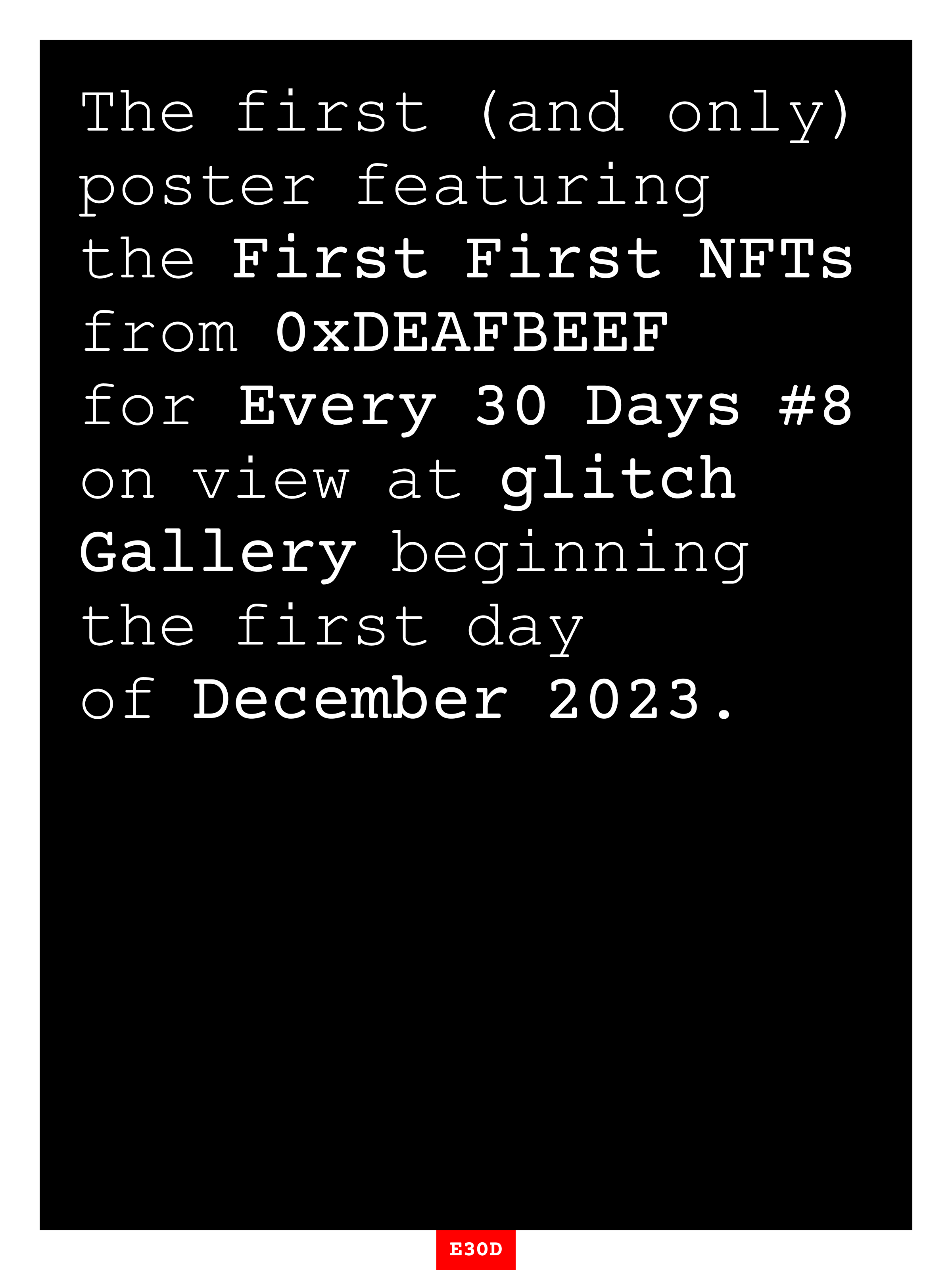In September 2021, during crypto art’s first mainstream frenzy, Canadian-born artist Deafbeef released First First. The generative collection is the largest edition series created by Deafbeef.
It may also be his least understood work.
The concept is simple – 5,000 digital objects featuring white text over black background. Each object’s words, created through an on-chain generative process, display a fictional news event as a categorical first event for crypto art.
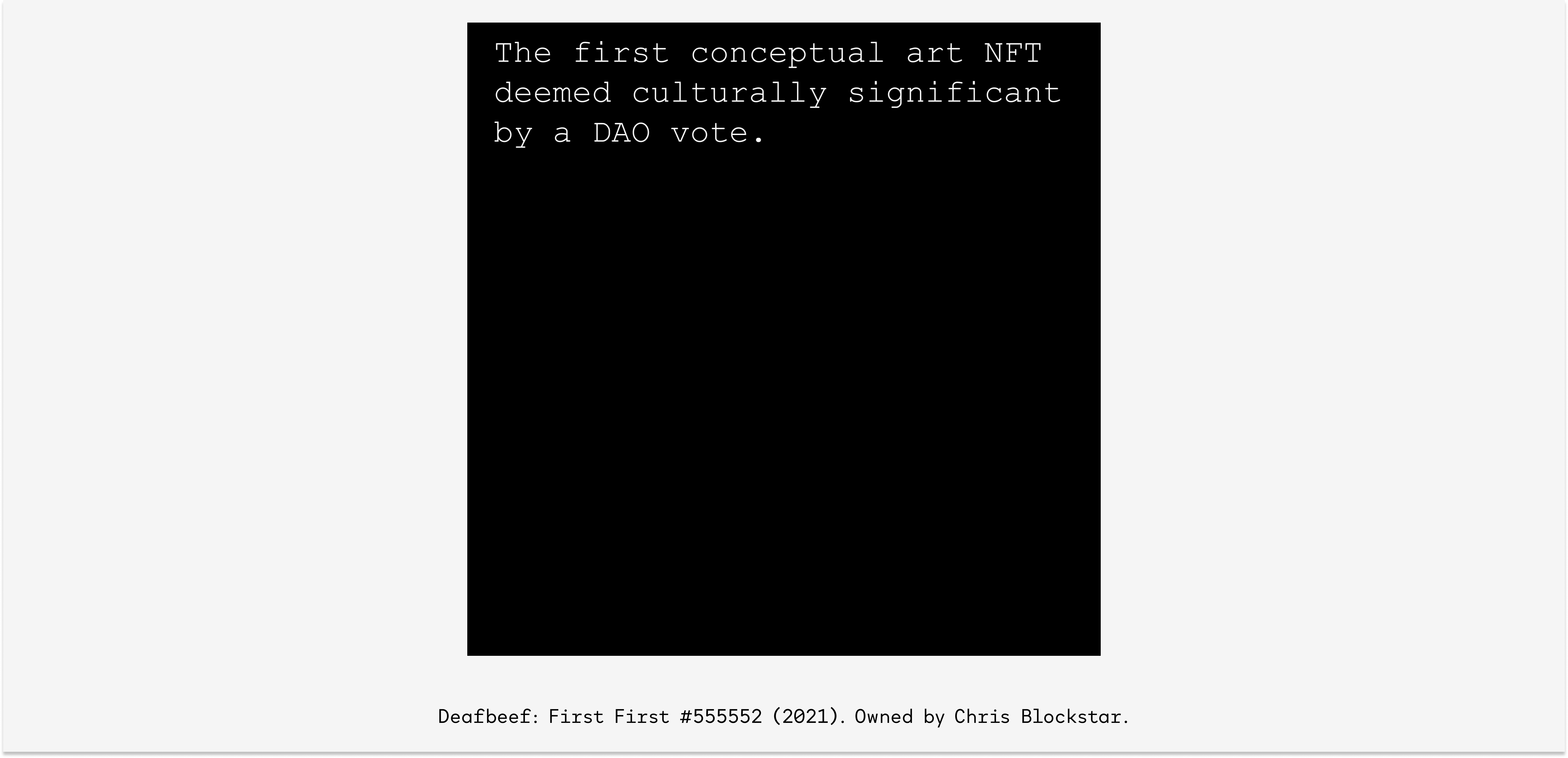
In each of the 5,000 outputs, the text is generated directly by the smart contract, with the syntactic elements (nouns, adjectives, and clauses) stored within the contract’s memory. Subsequently, the phrases are generated by the tokenID, which serves as a seed for producing each sequence of pseudorandom numbers.
Utilizing a so-called context-free grammar, consisting of if-else statements weighted probabilistically, a Solidity function deterministically creates the final text for each object.
Last, this string converts into an SVG and output as a data URL. Importantly, the contract does not rely on external resources or images for rendering. The process is entirely self-contained within the smart contract.
At once satire and fictive documentary, First First captures the convergence of cultural breakthroughs happening across both the NFT space and the ‘everything bubble’ that categorically defined Summer 2021. The collection of 5,000 objects is, perhaps, the best snapshot of this moment available in the medium of crypto art.
Appropriately, the contract describes the work in a self-referential fashion as the “first satirical on-chain generative text NFT about NFT firsts,” emphasizing (and questioning) its own contribution to the cultural environment in which it was released.
While First First reads as both a satire and commemoration of the crypto art space at its speculative peak, the austere and often overlooked work is one of the most fascinating windows into Deafbeef’s acclaimed practice as a whole.
Austere Aesthetics
Despite entering the crypto art space deep into the 2021 cycle, Deafbeef quickly became one of the most thoughtful and respected crypto artists. With 20 years of experience across varied fields like electrical engineering, sound production, computer graphics and blacksmithery, Deafbeef grasped the Ethereum Virtual Machine’s potential as an artistic medium in its own right.
From the start, Deafbeef showcased a remarkably consistent artistic language across his projects. He developed a distinctive approach to the concept of “on-chain” digital art, opting for self-contained systems in C, a low-level programming language directly stored on Ethereum. Creating from a clean slate, unfettered by external dependencies or ready-made tools, Deafbeef was able to create remarkably coherent artistic language, singular in its expressiveness.
The artistic world that emerges from Deafbeef’s constraints appears closely intertwined with the machine, presenting a retro-futuristic landscape in grayscale, featuring ASCII characters and elements from signal processing. The impression conveyed by these artistic worlds is that limitations can be a style.
If you make them so.
No ornament, no decor, no triviality. Deafbeef’s work aligns with a tradition of artists who pursue an aesthetic of reduction and constraint – possessing a kind of solitary purity, reminiscent of the monochromatic painters, like Ad Reinhardt or Robert Ryman.
Deafbeef released his first work, “Series 0 - Synth Poems,” in March 2021.
This on-chain, audio-visual piece utilizes FM synthesis and XY oscilloscope visualization and minted in a limited edition of 128. His subsequent five works, also low-edition generative audio-visual projects, further developed his austere aesthetic and independent approach to on-chain storage. After the release of the sixth work in July 2021, these pieces were collectively referred to as the first volume.
Akin to the sequencing of music on a record, Deafbeef’s sequential ordering of the projects underpin the coherence of this body of work, thus setting up a dialogue between them. These limited series have attracted one of the most loyal and dedicated groups of crypto art collectors today.
In November 2023, Deafbeef ventured into a uniquely performative IRL mint with “Hashmarks”.
As part of the Bright Moments chapter in Argentina, he released 100 unique hand-forged iron sculptures and cryptographically linked digital objects. Collectors selected the sculptures at the end of a communal trip to the ‘end of the world’ in Patagonia, a performance that highlights the artist’s growing interest in the intersection of digital, natural, and social systems.
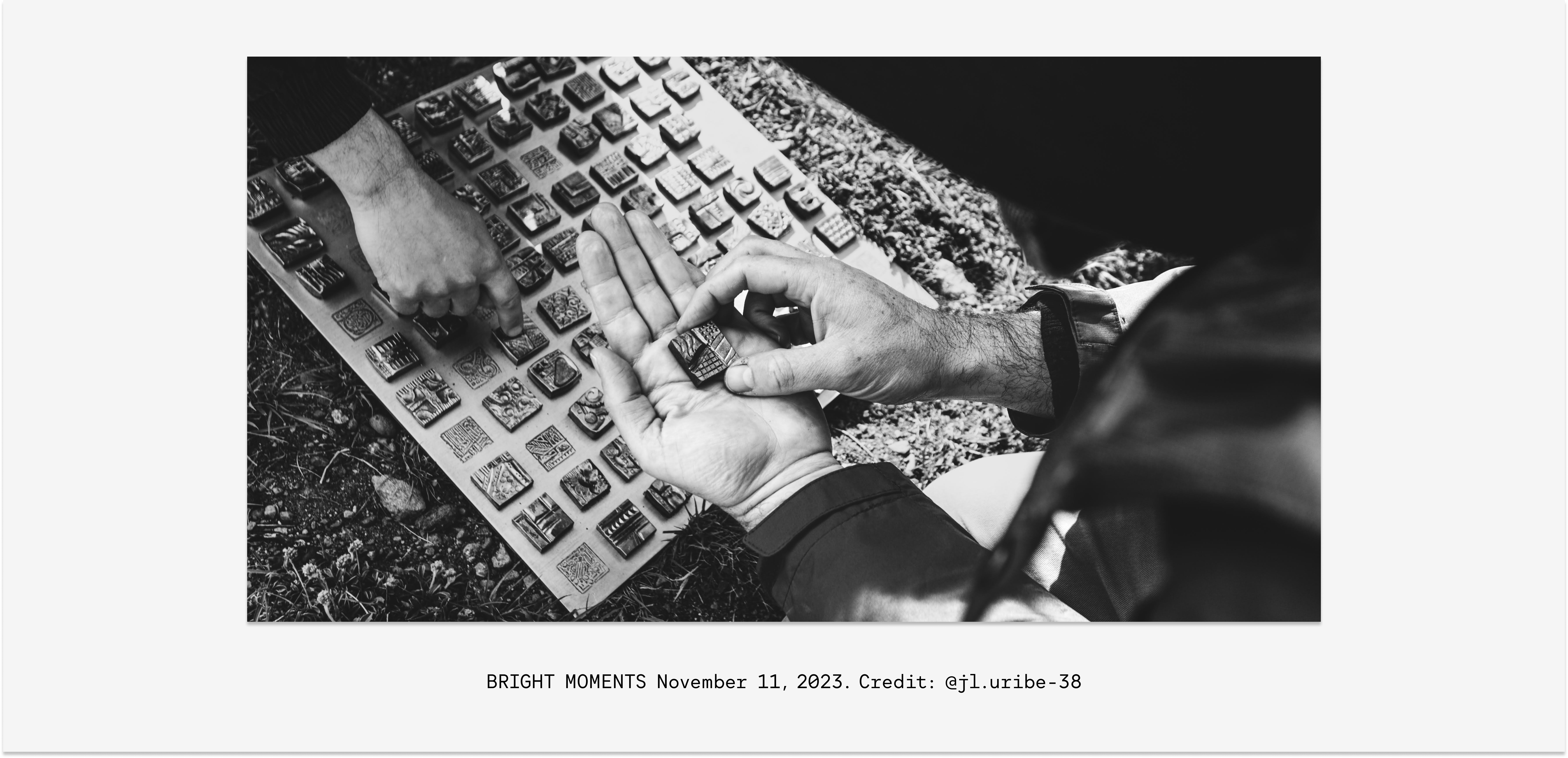
The first and last thing to say about Deafbeef’s art – it demonstrates unity of the highest degree. His work adheres to a stylistic and almost atmospheric consistency, one that links all of his diverse projects. Feeling as though cast from one piece, emergent from the same austere monochromatic source.
Conceptual Constraints
The role of constraint in Deafbeef’s work, and in First First in particular, invites a general discussion of the notion of conceptuality in contemporary digital art.
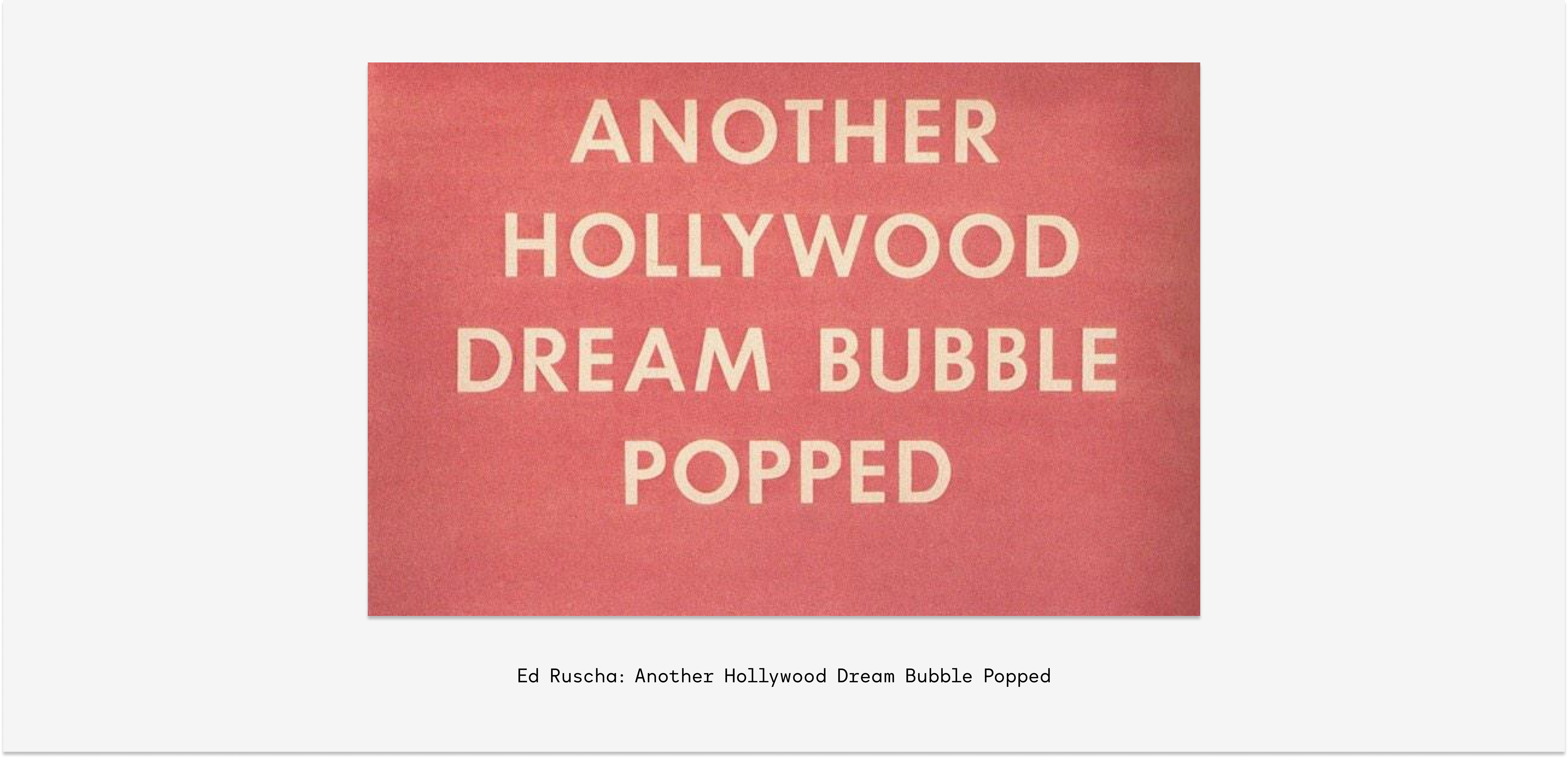
In the visual arts, the polymorphous notion of the “conceptual” in art is used to describe two interconnected yet distinct phenomena.
In a general sense, it refers to elements in art that transcend the merely aesthetic, moving towards an intellectual content. This general understanding of conceptual art is often traced back to Marcel Duchamp and other early 20th-century avant-garde artists, although they never used this terminology.
More specifically, it is used to describe a specific movement in the 1960s that introduced the term and sought to dematerialize the art object to frame it as linguistic or ideational. The central prepositions proclaimed by this movement was that ideas alone – independent of individual mediums or genre – can be works of art.
Deafbeef’s work is far too technical to be understood entirely as a response to the latter, yet the strict focus on language in First First invites a comparison to the role of language.
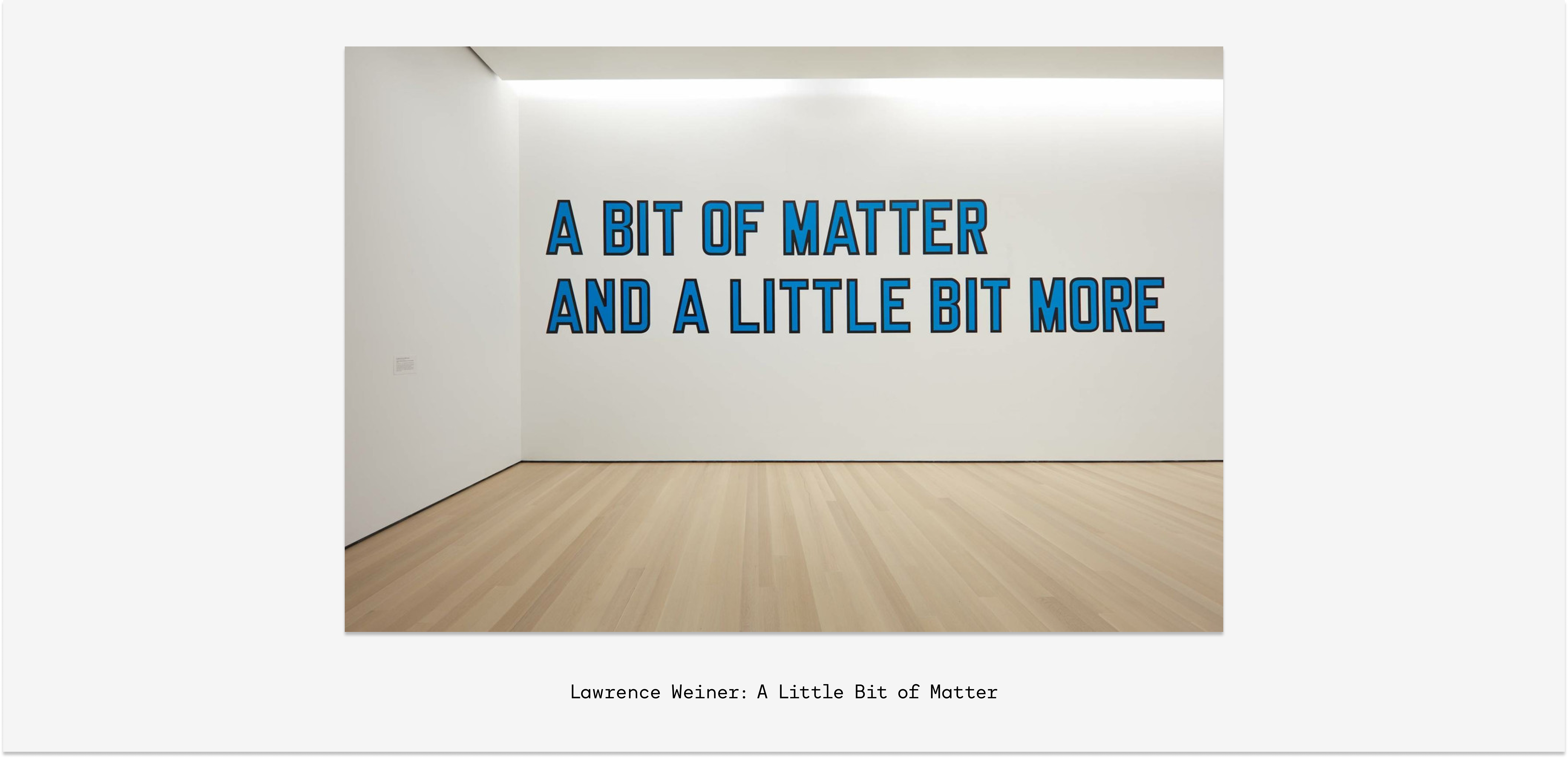
The core of conceptual art in the 1960s: “art without space”, art that would be entirely dematerialized and object-less. Artists such as Lawrence Weiner, Robert Barry, and Joseph Kosuth pushed the “art object” increasingly further in the direction of a pure statement. Curator Seth Siegelaub brought this tendency to its logical conclusion by organizing an exhibition that took place only as a catalog.
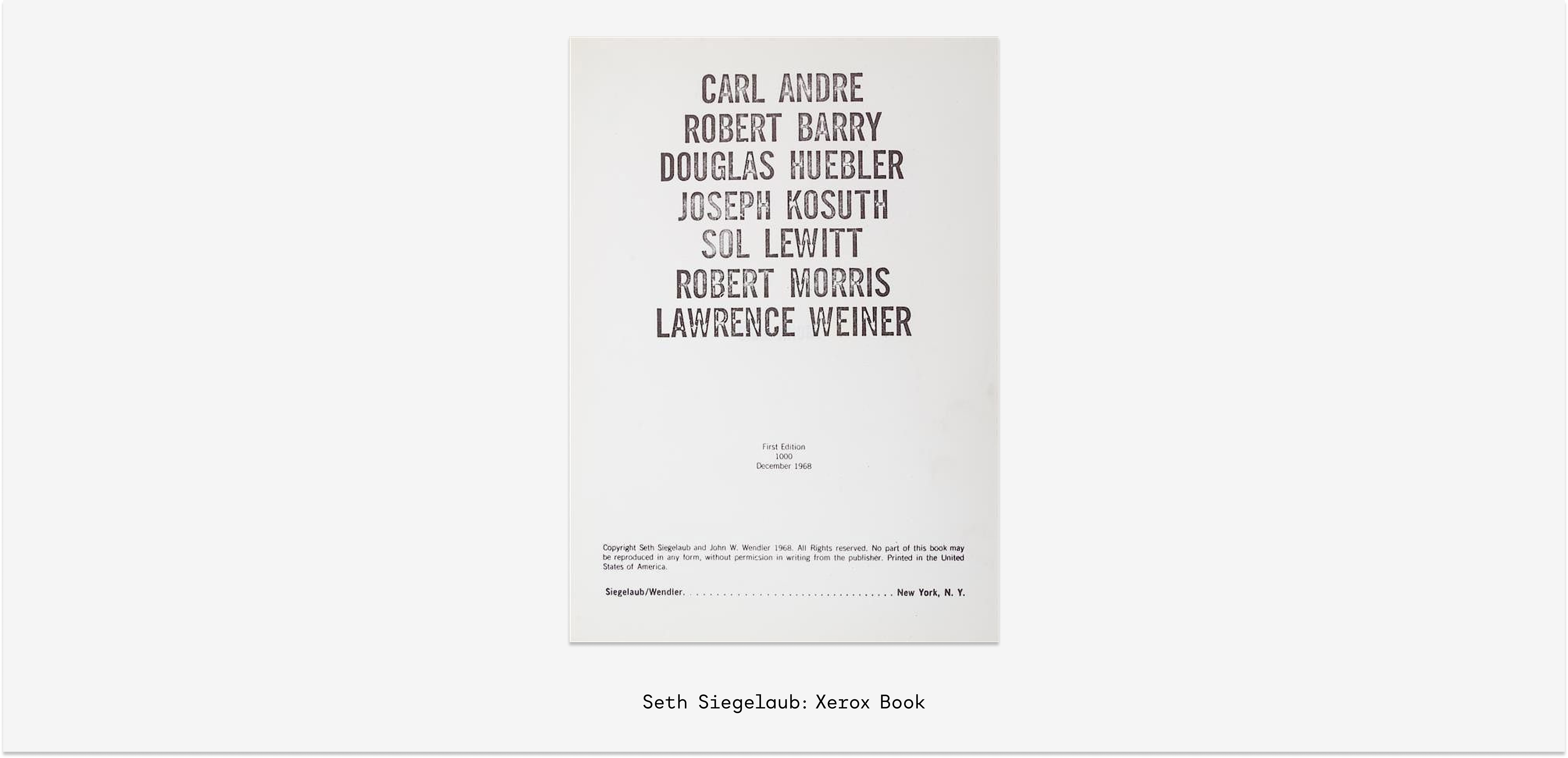
The development of conceptual art into a ‘pure’ language-based form was a key event in 20th-century art history. It demonstrated art’s ability to transcend traditional visual aesthetics, proving that art is not confined to any particular form or medium. However, the shift towards viewing art as a language eventually reached a kind of impasse, restricting art to a singular domain despite the liberatory impulse.
This concept of visual art as language, once radical in the 1960s, has lost its force in the visual arts today.
However, when Deafbeef released a series of restrained black and white text works in September 2021, this approach resonated with the earlier sense of radical reduction – coming, as it did, at a time when staggering sums were being spent on digital objects.
![Josef Kosuth Titled (Art as Idea as Idea) [Nothing in English], 1968.jpg](/uploads/Josef%20Kosuth%20Titled%20(Art%20as%20Idea%20as%20Idea)%20%5BNothing%20in%20English%5D,%201968.jpg)
And yet, the emphasis on text in Deafbeef’s work does not suggest gestures of dematerialization — an idea that seems amusingly inappropriate for code-based digital objects stored on a decentralized database. Instead, the turn away from the aesthetic surface and towards language serves as a gesture of interrogating meaning and value at the speculative peak of hype.
Aesthetically, First First is inspired by Loot, a mint-from-the-contract gaming project that featured digital objects as “adventurer gear” released shortly before First First. The fervor and speculation that accompanied Loot led to a zenith in mania that saw the humble collection dominate headlines and venture portfolios. As an artist caught up in this frenzy, Deafbeef utilized First First as a conceptual mirror, processing his own experiences of excitement and bewilderment.
Language Machine
In contrast to the 1960s version of art as language, First First also refrains from treating language as a reality in its own right. Instead, it subtly explores the system-based nature of language itself.
%20(1969).jpg)
Language is a combinatory system, akin to a machine that generates meaning from elements that, individually, lack inherent sense. Meaning arises not from intention (from what one means) but from the relation of these elements within a system.
As previously mentioned, First First utilizes a context-free grammar, employing a series of if-else statements with weighted probabilities. The structure comprises three components:
(1) “The first” + (2) “(zero or more descriptive adjectives) NFT” + (3) “several different templates of qualifiers”.
A few hundred basic elements in (2) and (3) enable the generation of a vast range of assertions, spanning the spectrum from common sense to complete nonsense.
By defining a finite set of grammatical elements and randomly assembling them, the work creates a multitude of possible fictive “firsts”. The concept of being “first” holds a distinctive significance in Western culture. The first instance sets the paradigm, establishing an authoritative origin, an idea that goes back to the Greek word “arche,” which intriguingly means both “first principle” and “command.”
Digital art collectors have come to appreciate the phenomenon of emergence in generative art. In First First, one encounters a different type of emergence – not the manifestation of intricate compositions from simple rules, but the generation of fictitious worlds from language.
Thanks to its world-building power, the project is reminiscent of the experiments in literature by writers such as Raymond Roussel, who used mechanic, phonetic rules to create nonsensical poems and narratives, or Jorge Luis Borges, who in “The Library of Babel” imagined the concept of an infinite library, housing every possible combination of letters, spaces, and marks, effectively containing all sense and nonsense.
Despite encompassing a book’s worth of text, it’s unlikely anyone has read all the ‘firsts.’ Through its vast array of nonsense, it captures the cognitive dissonance of summer 2021, also reflecting on the arbitrary assertions that accompanied the hype.
However, perhaps the series’ most miraculous aspect is that its generative, senseless announcements have exceeded the function of commentary and partly forecasted the future.
In fact, Deafbeef frequently uses objects from the collection to comment on crypto art’s evolution. He connected “The first animal themed PFP NFT redeemable for a coupon at Walmart”1 to the launch of Pudgy Penguin merch at Walmart.
Later, he responded to the by-now notorious “Beef Brothkos” exhibition by Die With The Most Likes at glitch Gallery with “The first edible dick pick NFT to be sold at a flea market.”2
Every event, no matter how absurd, seems to have been anticipated in Deafbeef’s encyclopedia of insane generative firsts.
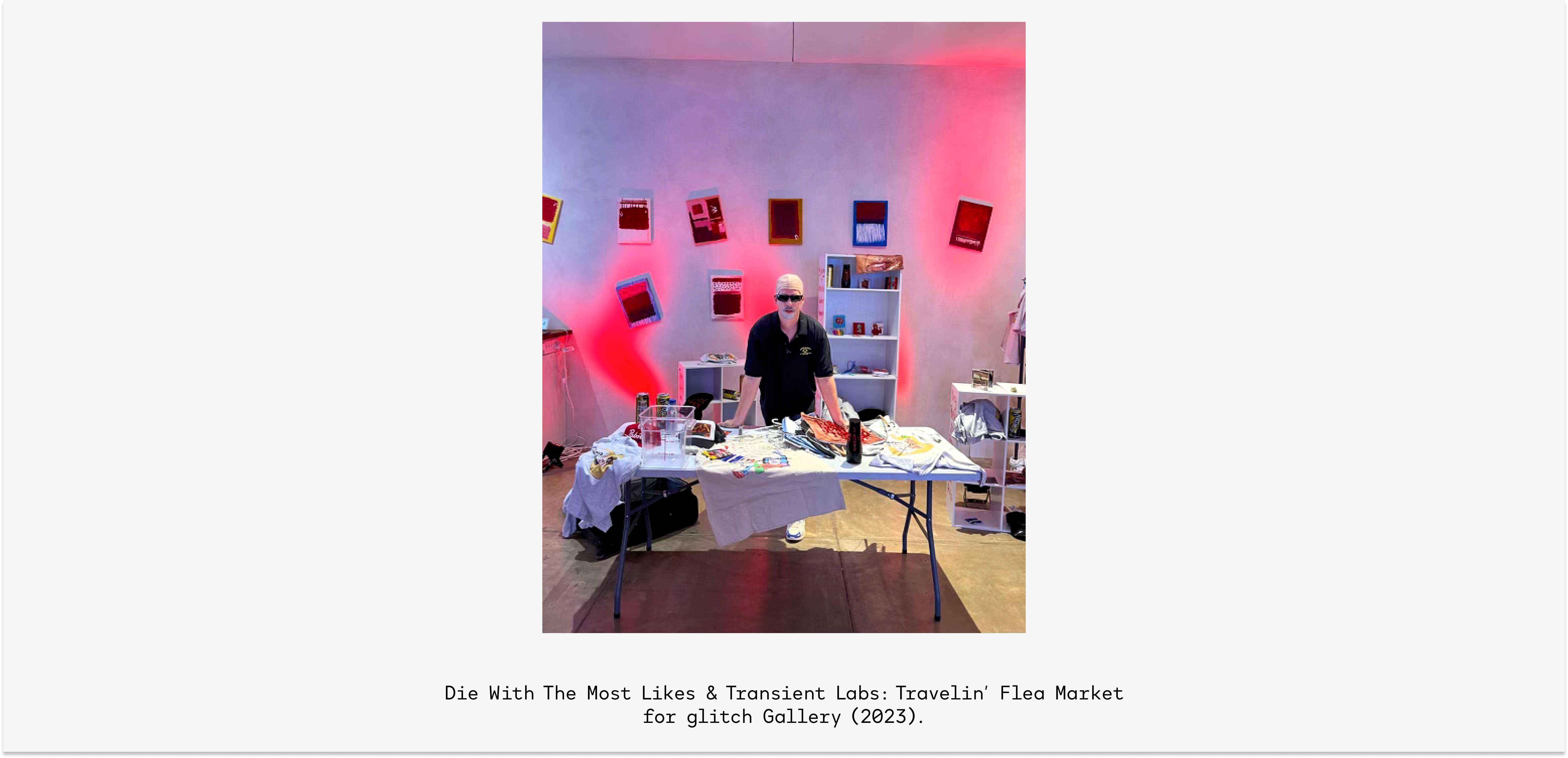
As this month’s Every 30 Days collector and Flamingo DAO member, Chris Blockstar notes:
“Initially, I viewed First Firsts like everyone else as parody and commentary on the NFT space, but its endurance has revealed there’s a lot more to it. Now, it can be viewed as a worldbuilding project using text and memetic distribution as a cultural operating system.
Each time we see a First First made real, the project further crosses a liminal boundary from fiction to fact.
It’s in this constant state of becoming, not through development or active guidance, but by having created space for a First to realize itself. It’s a very clever piece of performance, capable of claiming the insanity of our space as its own design simply by conceptualizing an outcome before it happens. There’s something emergent and wonderful here that we haven’t seen with any other NFT project. It stands alone.”
It is unlikely that the contemporary art world would afford an artist – one on a conceptual and technical level as Deafbeef – the freedom to develop his work.
The fact that the community of crypto art collectors has championed him is one of many testaments to this space turning into a context where some of the most conceptually advanced works of art are produced today.
Deafbeef is unique. His work stands alone.
In many respects, the sum of his previous creative efforts are considered by glitch Gallery to be among the finest artistic works produced in this space.
They won’t be his last.
